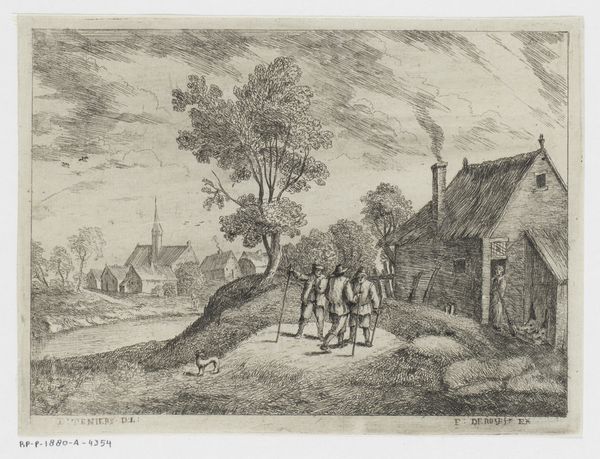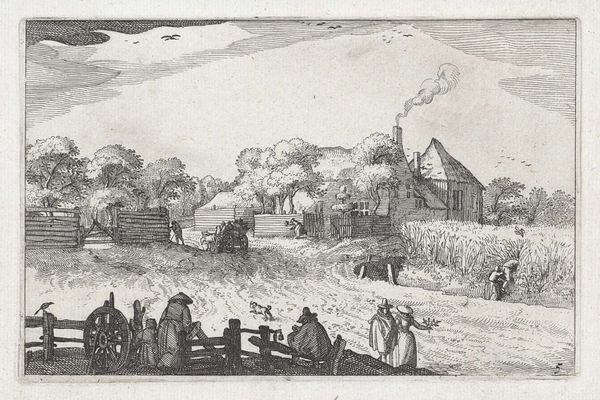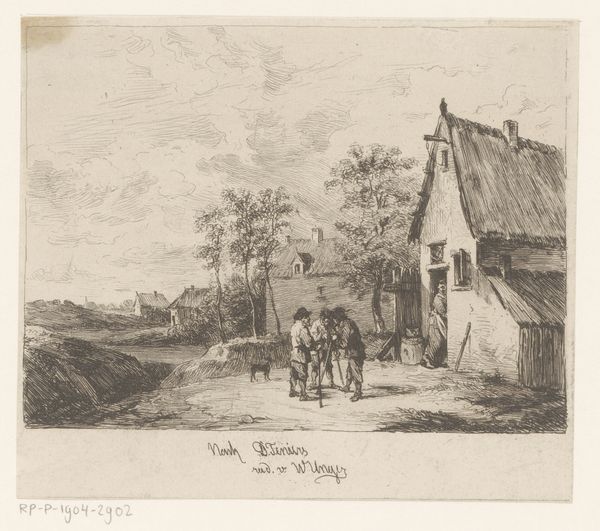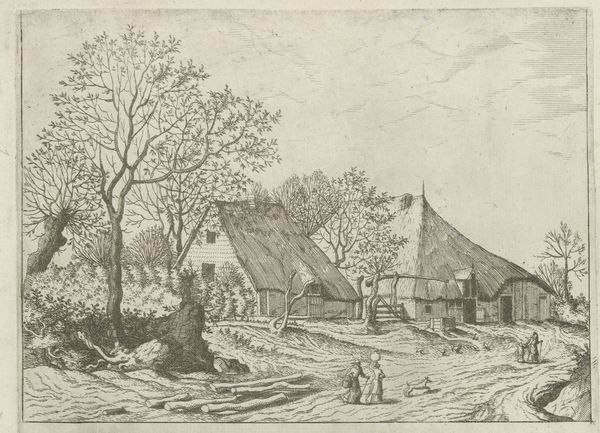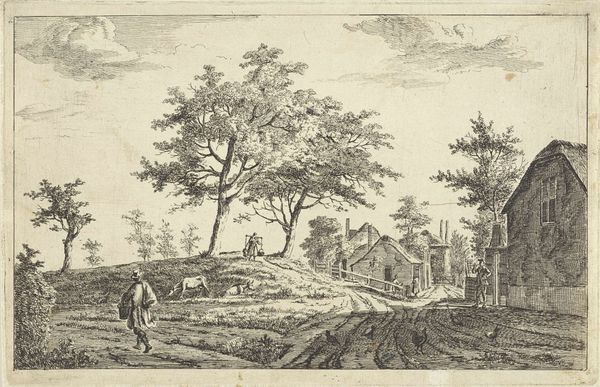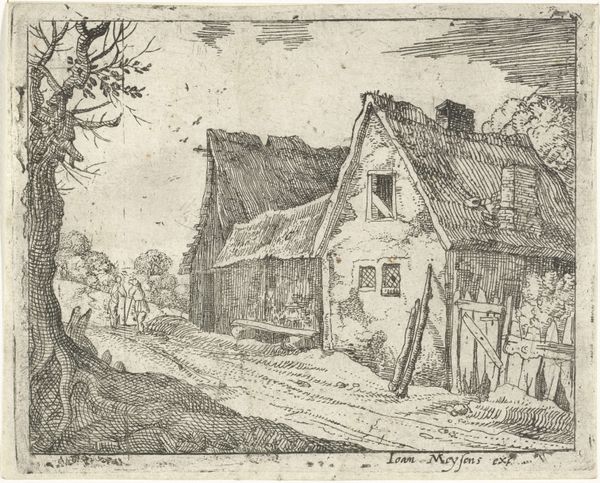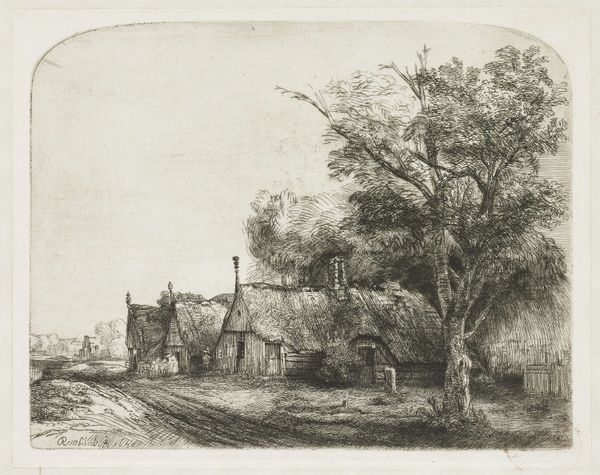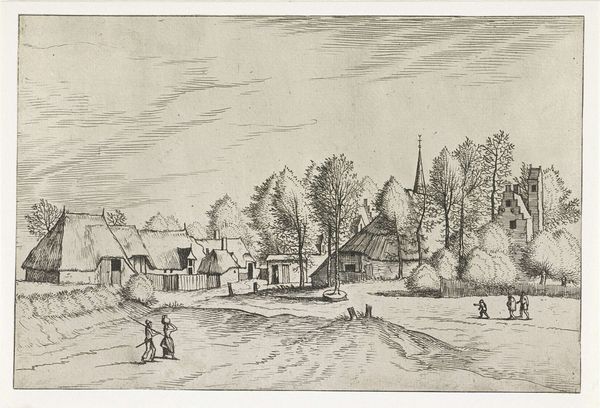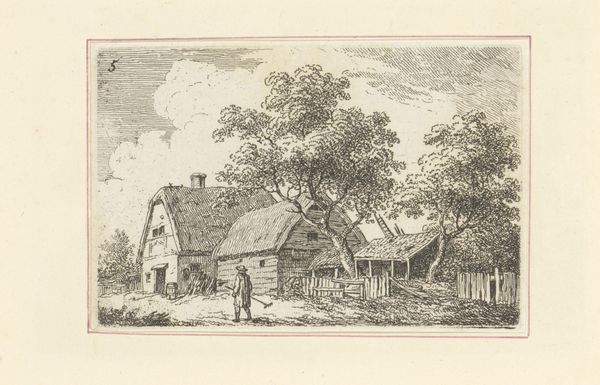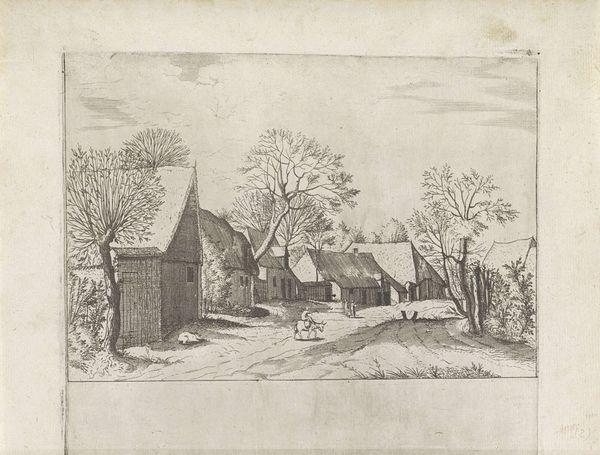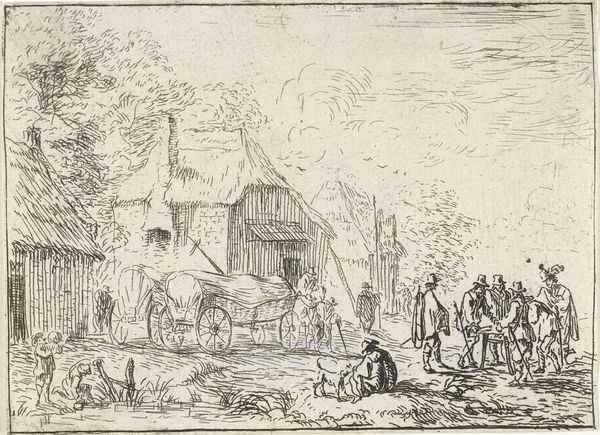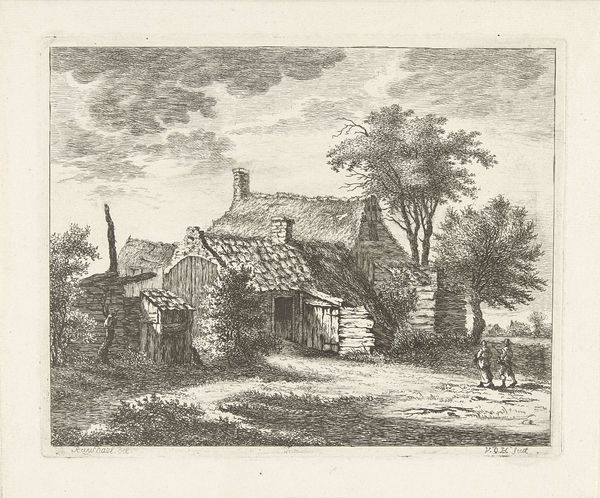
print, etching
#
dutch-golden-age
# print
#
etching
#
landscape
#
line
#
genre-painting
#
realism
Dimensions: height 146 mm, width 170 mm
Copyright: Rijks Museum: Open Domain
Editor: Here we have Johannes Janson's "Landscape with Farmhouse and Hay Barn," made in 1783. It's a print, using etching, and immediately strikes me with its almost stark, linear quality. It feels very matter-of-fact. What are your initial observations of this piece? Curator: I would note the prominence of line as you observed, and the resulting structure the artist has built through its meticulous arrangement. Consider how Janson directs the eye; from the road, the viewer’s sight advances from the foreground toward the background horizon. The diagonal slope formed from left to right moves from shadow into light, drawing attention up and away, where the figures anchor our vision in their implied circular interaction. The smoke from the chimney directs us up into the negative space of the composition as well, while the light and shadows reinforce this dynamic pull toward the pictorial space beyond. Do you notice how Janson constructs depth using linear elements alone? Editor: Yes, now that you point it out, the convergence of lines toward the church spire and the smoke definitely creates depth, even though there's no colour or shading in the traditional sense. The scene is structured as a triangle, focusing my attention on the farmhouse in the center. Are the lines in the sky part of this visual effect as well? Curator: Precisely. These parallel lines, created by varied etching techniques, establish visual volume, suggesting dimensionality, which the building reinforces on its side. This builds upon earlier printmaking traditions, moving past the strictly picturesque view. There’s an elegance in its starkness that anticipates some elements in modern landscape depiction, and that speaks to the evolution in linear language available through the printmaking process. Editor: So, by analyzing these basic formal elements, we can see both historical influences and a progression toward future artistic movements. It really makes you look at landscapes in a whole new light, appreciating the composition. Curator: Indeed. In appreciating how visual elements interact to create new language we create pathways for understanding the historical as well as our own present view.
Comments
No comments
Be the first to comment and join the conversation on the ultimate creative platform.
